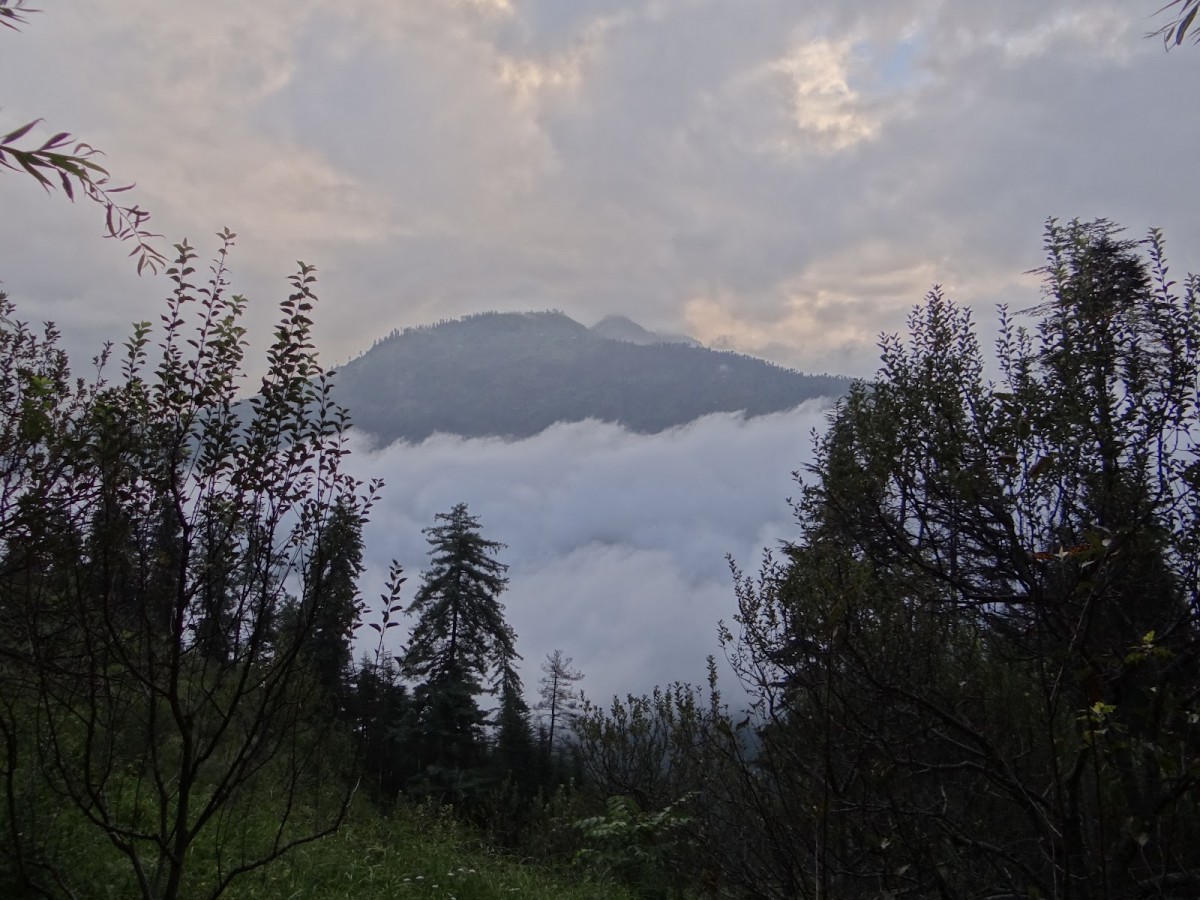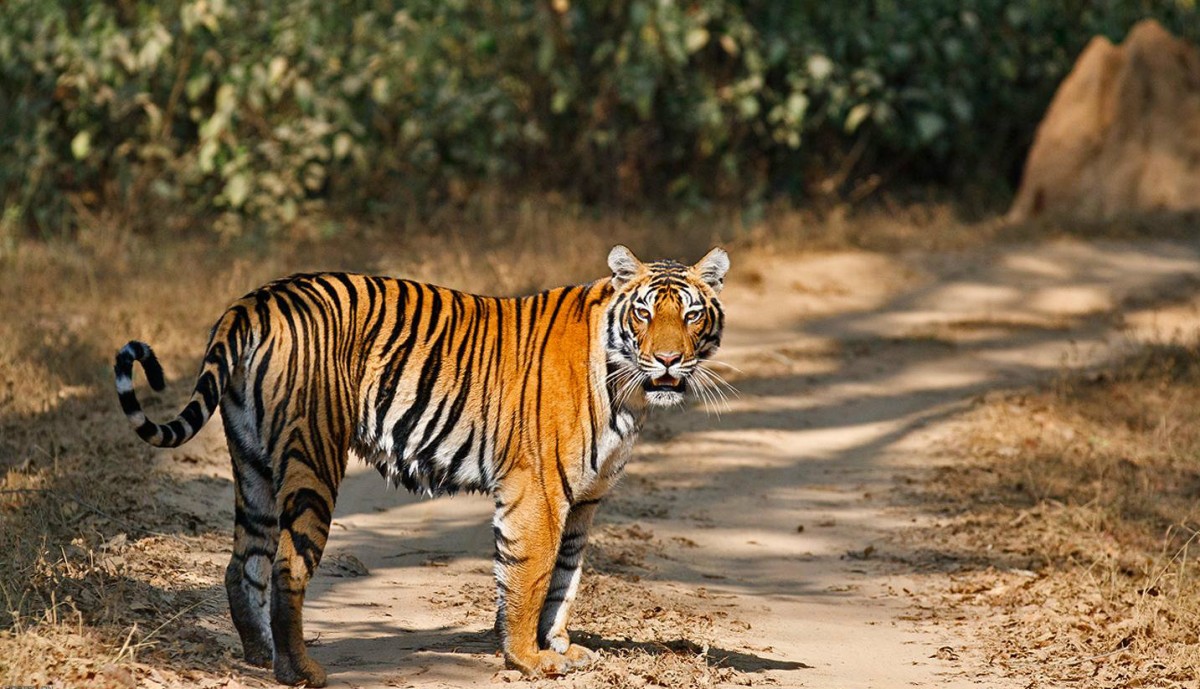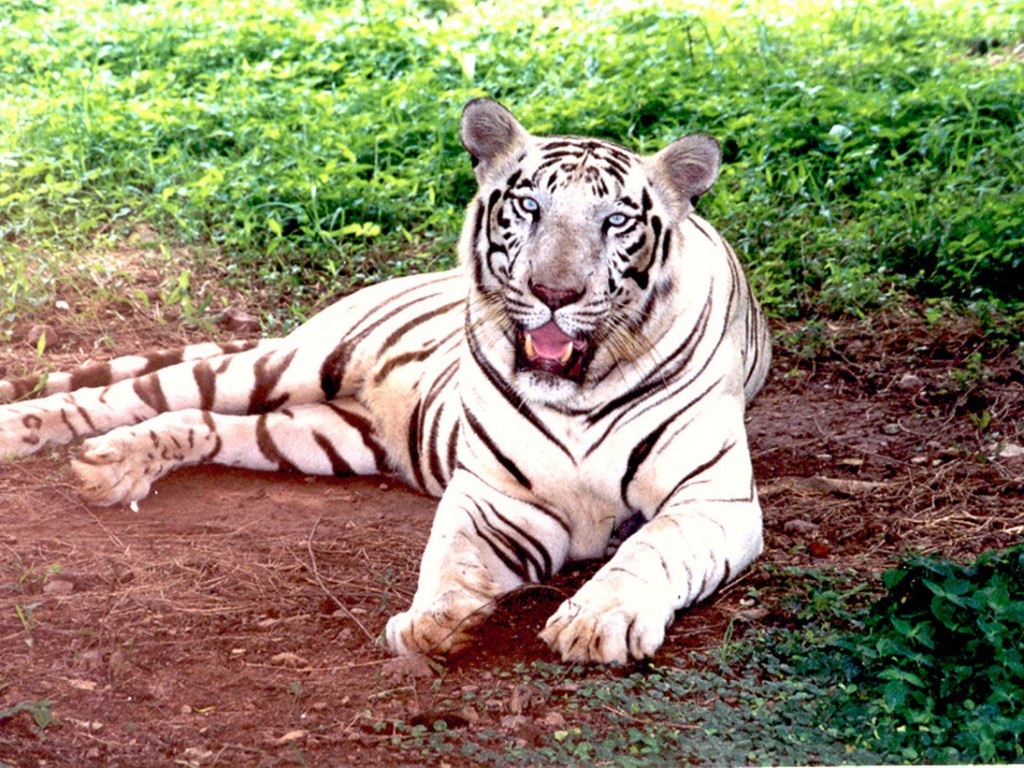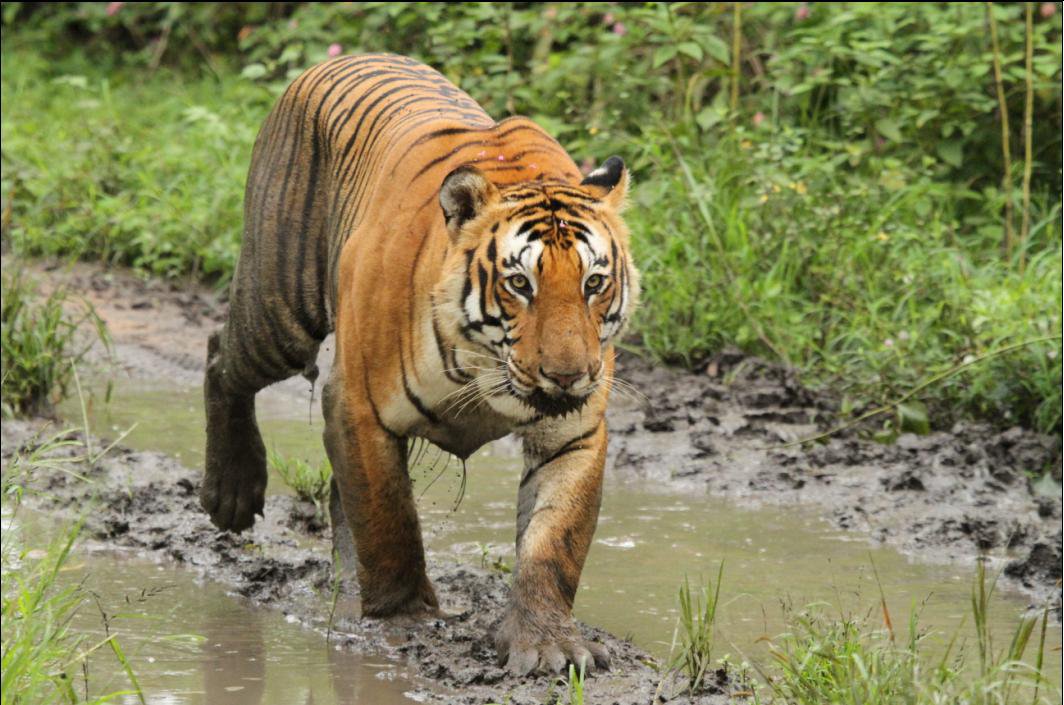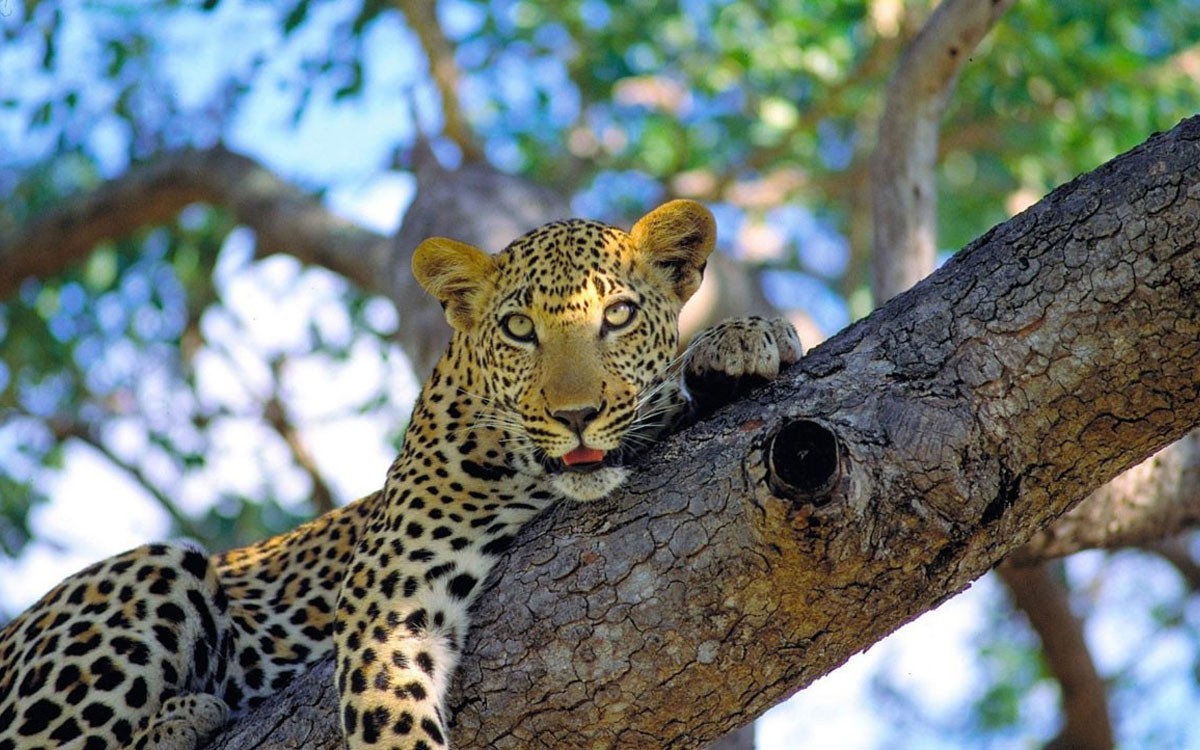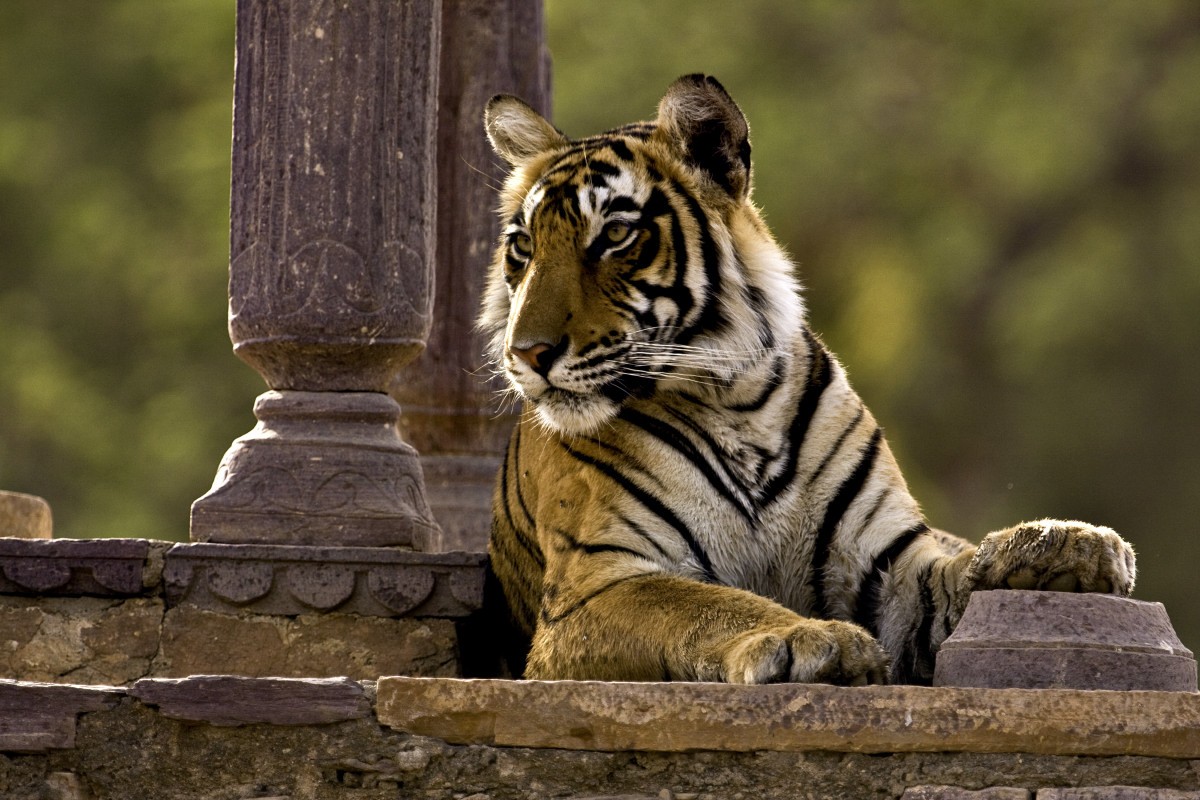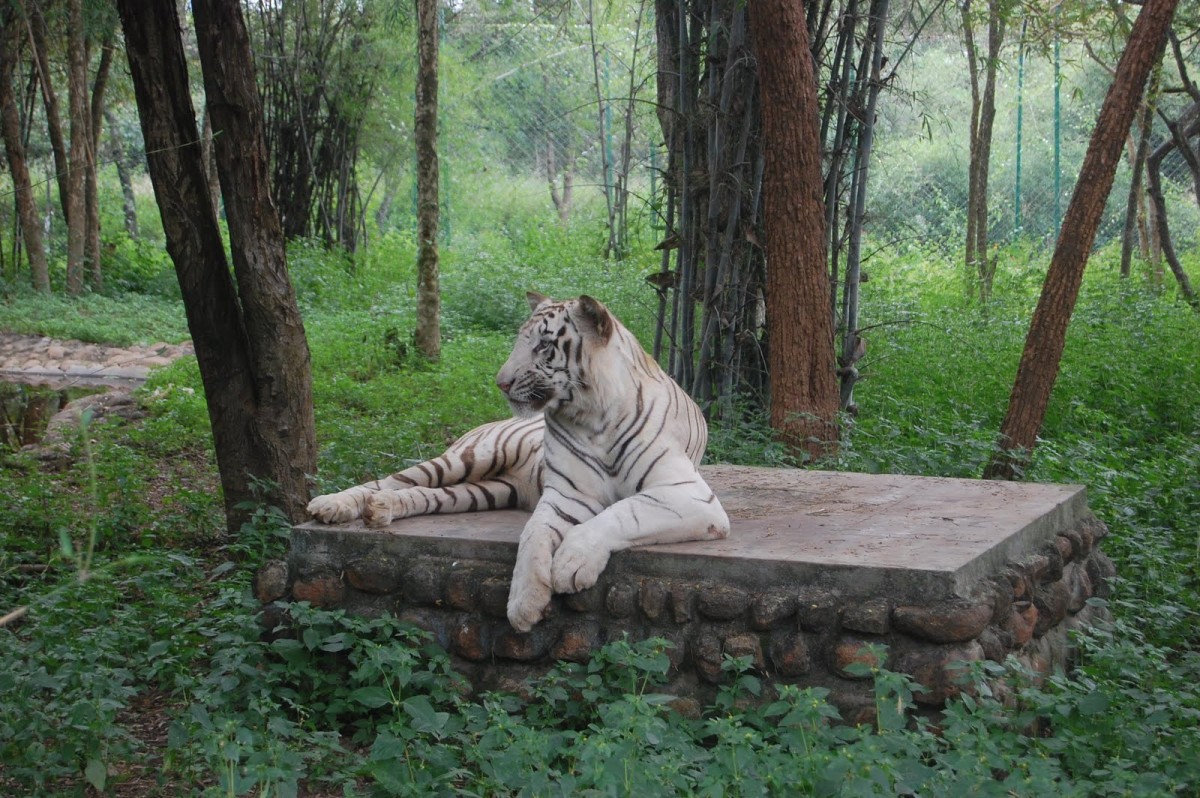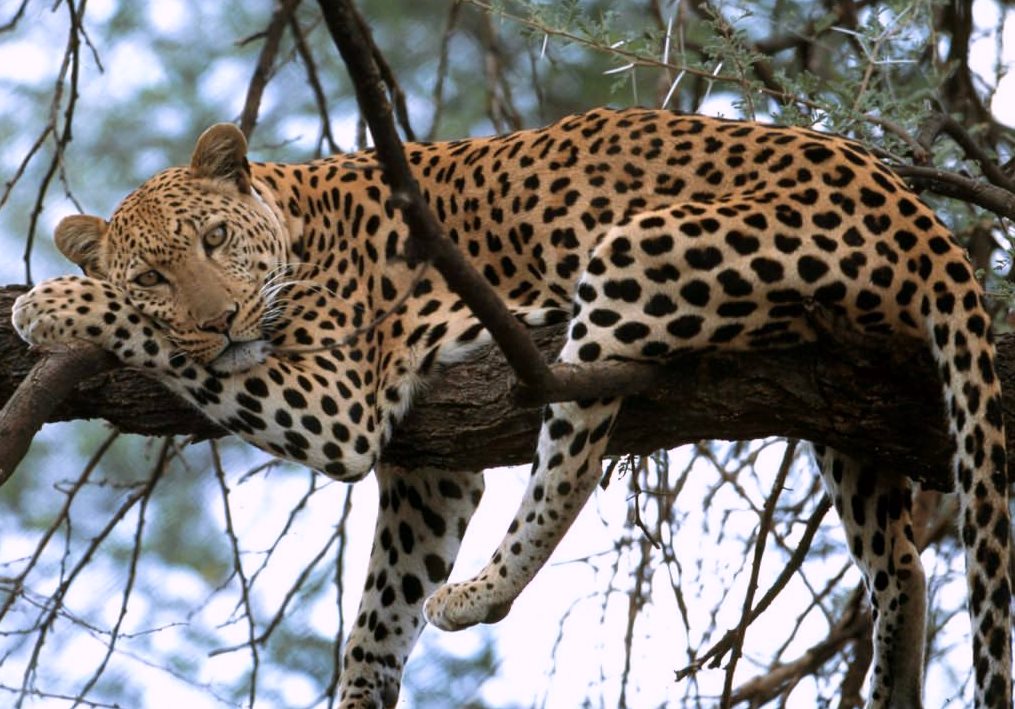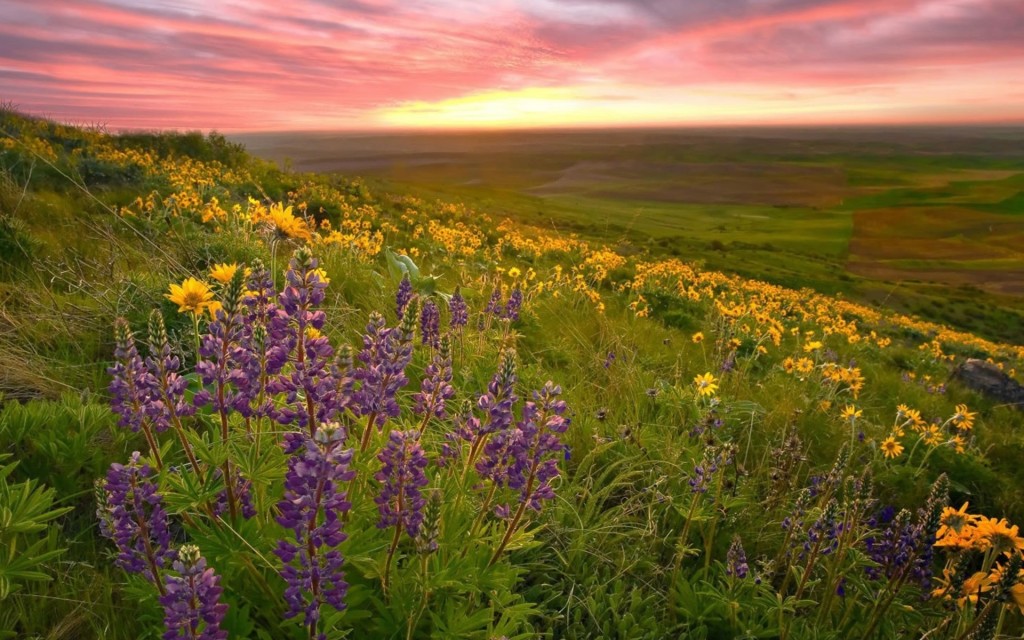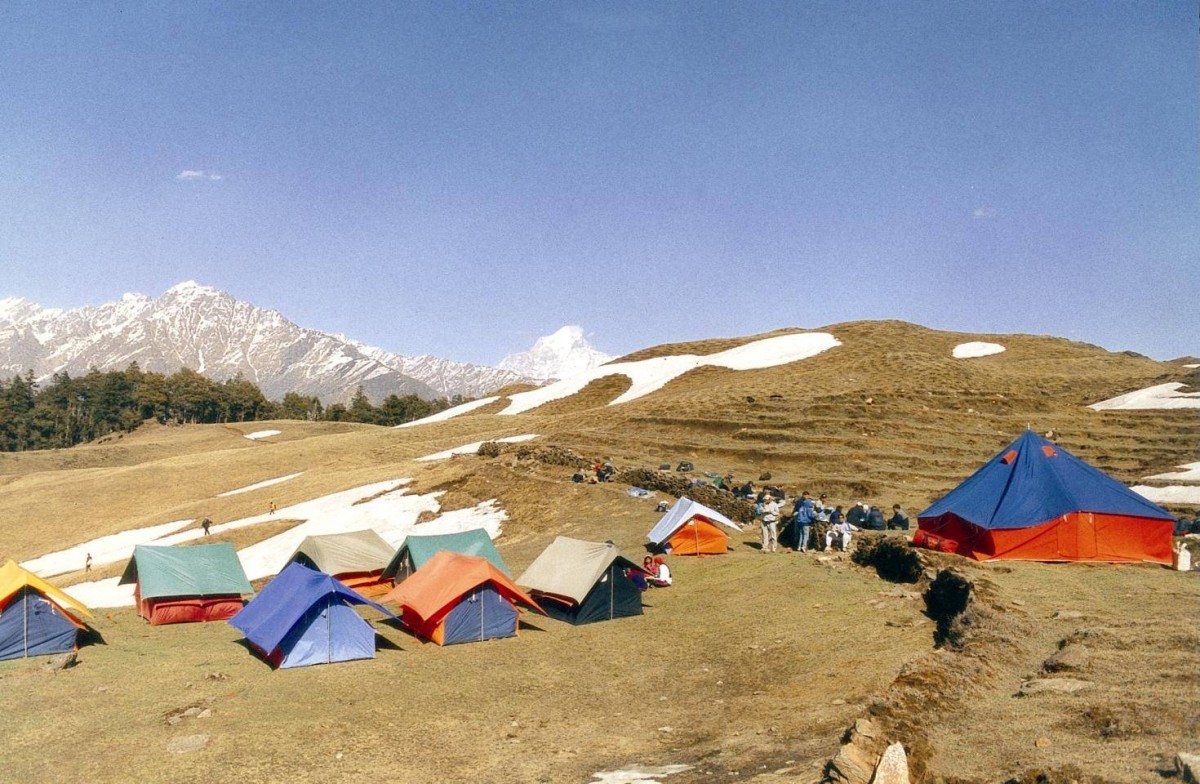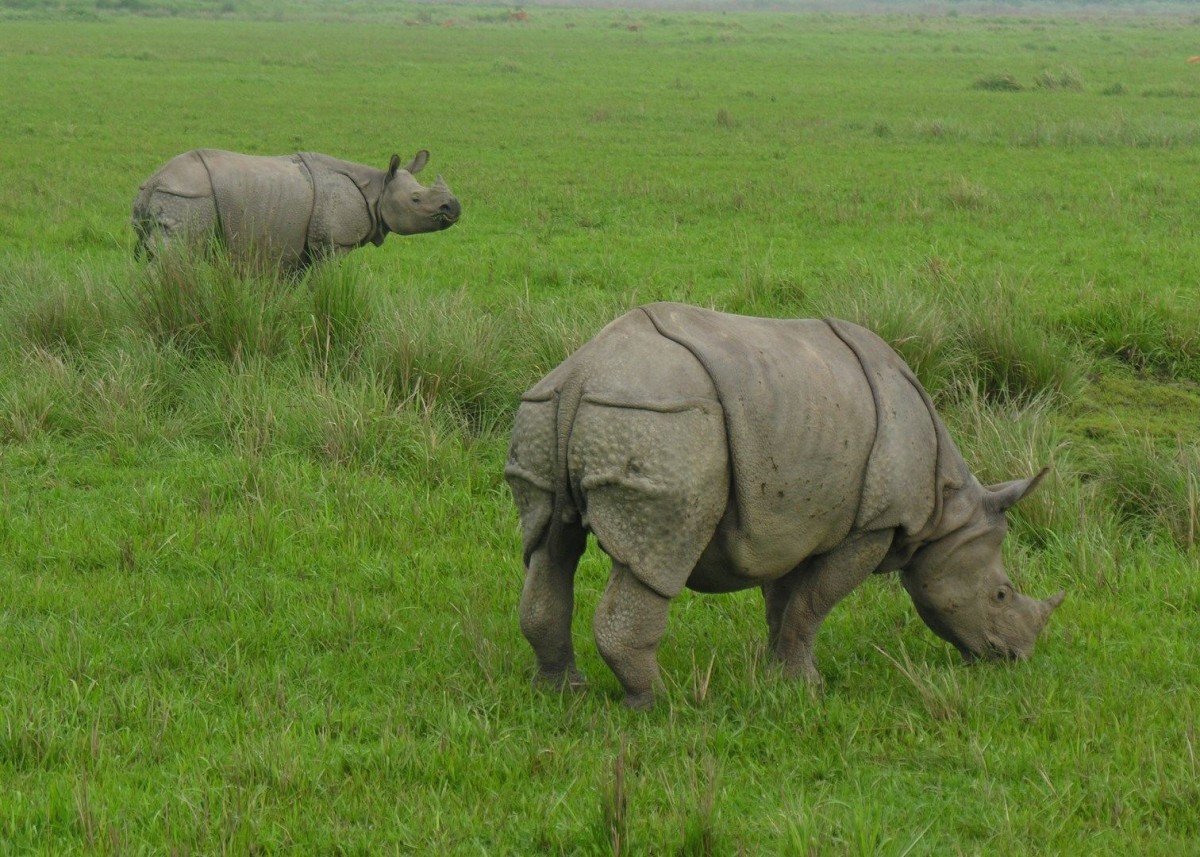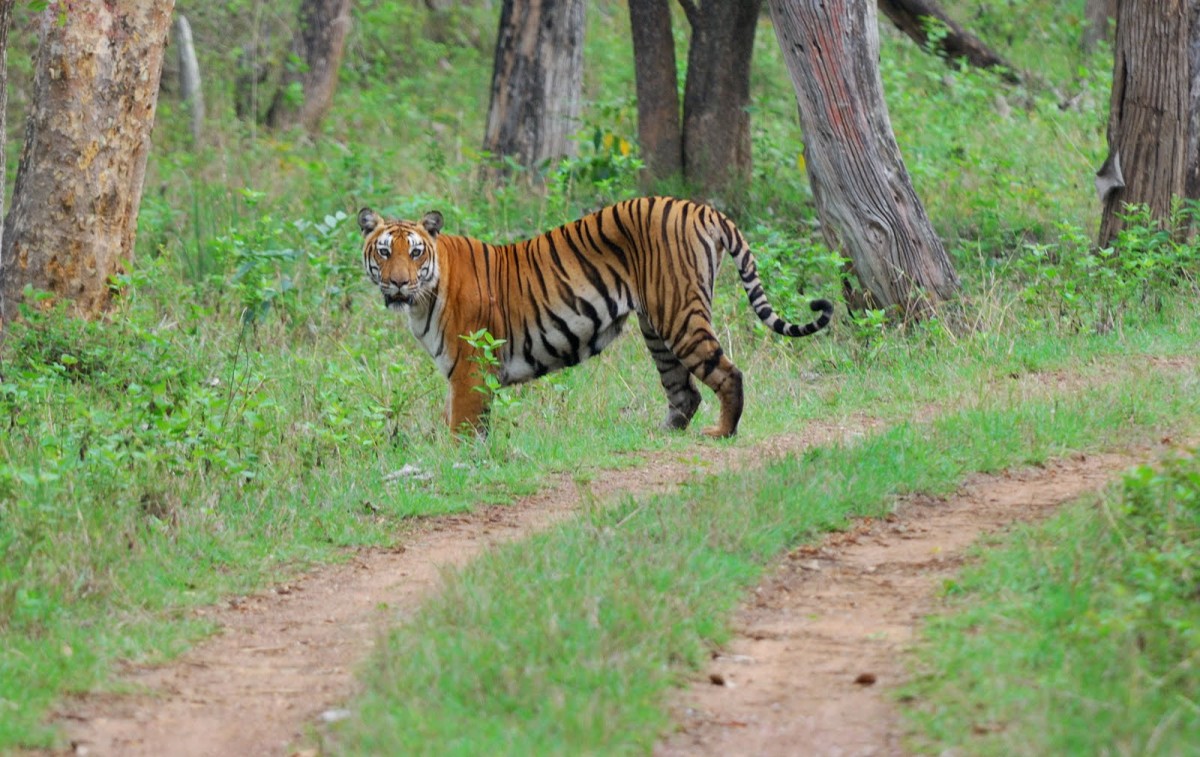
Bandipur National Park
Bandipur National Park at a Glance
| IUCN Category | II (National Park) |
| State | Karnataka |
| Area | 880 sq. km. |
| Core | 523 sq. km. |
| Buffer | 357 sq. km. (87,400, comprising a wilderness zone of 33,500 ha, buffer zone of 43,400 ha, tourism zone of 10,500 ha and an administration zone of 100 ha.) |
| Year of Notification | 1974 (June 05, 1974) |
| Topography | Grassy woodland mountains & undisturbed forests. |
| Altitude | 780m – 1454 m. |
| Monsoon | Mid – June to September |
| Winter | November to mid – February |
| Summer | Mid – February to mid – June |
| Topography | 11 degree C – 30 degree C. |
| Rainfall | 625mm -1250mm. |
| Attraction | Elephants, Gaur |
| Longitude | 76 degree 07’00-76 degree 52’40”E |
| Latitude | 12 degree 03’30” – 12 degree 54’17”N |
| Special Status | Tiger Reserve |
| Vegetation | Dry deciduous forest, Tropical deciduous forest. |
| Best Time to Visit | March – July, September – October. |
| Nearest Town | Gundelpet (20 Km). |
| N. Rly. Station | Nanjungud (55 Km). Mysore (80 km). |
| Nearest Airport | Mysore (80 Km). |
Bandipur National Park: As a part of the lushly forested Deccan Plateau, Bandipur in Karnataka offers a rich and varied wildlife habitat. It is a part of a larger national park which also includes the neighbouring wildlife sanctuaries of Mudumalai in Tamil Nadu and Wynad in Kerala. This sanctuary is one of the 27 sanctuaries selected across India for Project Tiger a scheme launched in 1973, by the Wildlife fund for Nature to save the tiger and its habitat. Covered with a mix of deciduous forests evergreen forests and scrub, and well irrigated by the Moyar river Bandipur has a fairly open forest area making it easy for vistors to spot wildlife. This sanctuary sprawls over an area of 872 sq. kilometers. The prominent fauna of this reserve, include the Asian elephant, gaur sambar chital mouse deer four horned antelope wild pig black naped hare and the Indian porcupine.
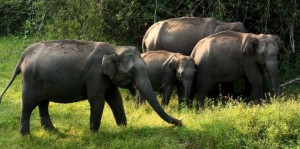
It is warm for most part of the year inth9is area. During the months of October to March the weather is cool and pleasant. The ideal time for viewing wildlife is during May and June and again from September to November.
Bandipur National Park is in the South of Cabini river and Mysore is gateway to this exclusive reserve. It has biological affinity with the adjoining National Park due to nearly identical habitats. It is an open grassy woodland with excellent mountain view and virgin forests. Part of this park falls under ‘Wilderness Zone’, where in tourists and forestry operations are not allowed.
The weather conditions at Bandipur conditions at Bandipur need to be taken care as June to September is wet season here and it remains cool up to January and February-May are hot with temperature variation between 15oC – 30oC. The landscape of Bandipur can be defined as a mix of gentle slopes and shallow valleys. Gopalaswamy Belta (1454mt.) is the highest peak in the area.
Bandipur being part of erstwhile Mysore state has always remained associated with maharaja of Mysore the one whr got nominated as Chairman of wildlife board of India formed after independence. Bandipur adjoins Mudumalai National Park (Tamil Nadu) and Nagarahole (Karnataka) with continuous forest (separated by interstate boundaries only) the wildlife movements are unrestricted between these three parks. It is 80 km from Mysore City on the excellent Mysore Ooty highway a 2 hours taxi ride or 3 hours bus journey.
Bandipur is a single ecological continuum which comprises Nagarahole Mudumalai Wynad Wildlife reserves. Due to geographic climatic and vegetation commonality these wildlife reserves share common wildlife. The reserve comprises mixed deciduous and tropical forests in the Western fringes while dry deciduous is the general vegetation. Kabini Moyar Mule hole are important rivers at from Nagarhole National Park. The vegetation is dominated by popular timber plants like mathi (Termanalia tomintosa) hone (Pterocarpus marsupium) nandi (Lagerstroemia lanceolata)rose wood (Dalbergia latifolia) teak (Tectona grandis) etc. Among shruds lantana & lupatorium dominates.
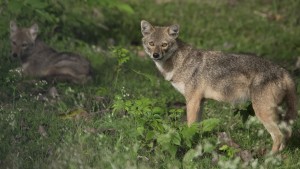
The wildlife population in Bandipur is dominated by wild elephant (Asiatic Elephants) (Elephas maximus habitual of seasonal migration. Wet season is best to herds of this majestic creature, with of onslaught of summer they are restricted to selected areas due to want of forage and water. As per an estimate 1400 of them were on the park area. In addition fair population of chitals, wild pigs, leopards (140) tigers (34) is reported by the park Authorities. The Gaur, great Bandipur attraction has regained their strength once reduced marginally after 1968 epidemic.
The ivory and sandalwood concern is matter of great threat to this park, due to their high international price. However, establishment of the park has helped in rendering protective measures.
The wild dogs. (although well in number at Kanha and Palamau) are reported high in No. (148) at the Bandipur Park, Gaur (Bos gaurus) is exclusive attraction of this park. Muntjac (Muntiacus muntjak) are small goat sized deer with loud bark hence also known as Barking Deer. Four Horned Antelopes are interesting ungulate in these parks. Indian Porcupine, Sloth Bear, Tiger, Leopard are also native of this park.
Samber (Cervus unicolor) is a shy deer, lives in thick forest cover, one can usually sight a young with the mother in wet season herds of 10-20 are common many of them and very large & have fine antlers. Chital (Axis axis) are in abundance in this park and are well adapted to human presence (even get congregated around tourist rest houses) are least shy to nature. Mouse deer (chevrotain) (Tragulus meminna) are rabbit sized tiny deers, with nocturnal habits. Among other interesting deers, four horned, antelopes (Tetracerus quadricornis) are small in size and dull brownish in colour., these are the only 4 horned animals in the world and are rare in their distribution. Due to their similar size one has to take extra caution to distinguish them from barking deers. In addition Bandipur also homes red giant squirrel (Ratufa indica), flying squirrel (Petaurista petaurista), bonnet macaque (Macaca radiata), slender loris (Loris tardigradus) although rarely seen due to their nocturnal habits.
This wildlife range is unique and diverse in its wildlife. One need 2/3 days each to familiarize with the wildlife in the park. Bandipur is the best choice due to better accessibility and wildlife viewing possibilities. Meticulous trip is recommended due limited accommodation within these parks; weekend visits need to be left for casual visits.
Bandipur is one of the originally constituted tiger reserves. It provides them ideal surroundings particularly dense cover and intensive protection declaring it as one of the finest tiger habitat. The probability of tiger sighting is low here but serious visitors may get dividend out of their patience. Leopards can be seen better than tigers, particularly from close range in the evening jeep drive. The striped hyena is confined to forests of Eastern Bandipur but are rare to be seen. In addition jungle cat, leopard cat small Indian civet, palm civet, common mongoose, brown mongoose common otter are also sighted here.
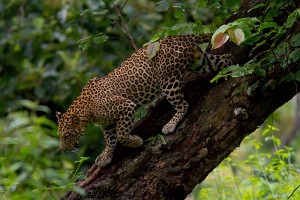
Like Nagarhole, Bandipur also is a popular point for bird watchers the few well known ones are shaheen falcon honey buzzard, king vulture gray partridge, Malabar trogon black woodpecker Indian pitta paradise flycatcher hill myna Malabar pied hornbill.
In the early morning and evening hours forest jeeps are available to experience wildlife in the wild one can reassure himself that he can have excellent view of most common species at the range of 14-18 meters. Bandipur also provides short elephant jungle rides, it gives a good feel of the jungle.
Rolling Rocks are an additional attraction for panoramic view of the Major Gorge (Mysore Ditch) and are worth a visit. Gopalaswamy Bitta provides exclusive and memorable experience as the panoramic view of park surroundings from here.
Road: Motorable roads connect Bandipur to Bangalore 220 km via Mysore. Coimbatore 168 km via Udhagamandalam Mudumalai Wild Life Sanctuary 19 km Mysore 80 km. Udhagmandalam (Ooty) 79 km via Mudumalai.
Local Transport: Nil Forest Department jeeps and vans are available for sightseeing. Elephants can also be hired.
Valuable References: Assistant Director, Bandipur Tiger Teserve, Bandipur, Karnataka Tel. 21. Secretary Forests & wildlife, Secretariat Building Bangalore, Karnataka. Biogeographical Province: 4.01.01. (Malabar Rainforest)
Geographical Location: Situated 80km from Mysore, on the border with Kerala to the south and Tamil Nadu to the west (lies at the heart of an extensive forest at the confluence of the Western Ghats and Nilgiri Hills.
Established On: Created a national park in 1974. (sanctuary since 1930s with 6000ha. The national park is included in the proposed Nilgiri Biosphere Reserve
Land Status: Under State Government
Physical Features: the terrain is undulating and broken by chains of hills, flat-topped hillocks and water-courses.
Climate: Cold (November to mid- February), dry (lasting until June) and wet (mid-June). Temperatures range between 18-24oC in November and 21-33oC in June
Vegetation: At Bandipur 3 main types of vegetation are evident: scrub (eastern most area); tropical dry deciduous forest (central area), and tropical moist mixed deciduous forest (western part).
- Scrub is characterized by stunted tree growth and is represented by Shorea telura, sandal Santalum album, Terminalia chebula, Azadirachta Indica, Acacia leucophloea, A. catechu, Zizyphus spp., Diospyros melanoxylon and Diospyros Montana.
- Tropical dry deciduous forest it Comprises a top canopy of Tectona grandis Terminalia tomentosa, T. paniculata, pterocarpus marsupium, Dalbergia latifolia, D. paniculata, salmalia malabaric, Albizzia odoratissima, Butea monosperma Emblica officinalis, and a lower camopy of Vangueria spinosa, Zizyphus jujube, santalum album cassia fistula. Undergrowth is mainly grasses and Lantana sp.
- Tropical moist mixed deciduous forest, bamboo Bambusa arundinacea, teak Tectona grandis, Terminalia tomentosa, Dalbergia latifolia, pterocarpus marsupium salmolia malabarica, Albizzia odorotissima odina wodier Ficus infectoria and other species of ficus. The lower canopy comsists of Embilica officinalis Butea monosperma racemosa Cassia fistula. The undergrowth comprises Hemidesmus indicus, Lantana comara etc.
Fauna in Bandipur National Park: common langur presbytis entellus bonnet macaque Macaca radiate tiger panthera tigris, leopard panthera pardus, wild dog Cuon alpines jungle cat Felis chaus, sloth bear Melursus ursinus striped hyena Hyaena hyaena jackal canis aureus, Indian elephant Elephas mouse deer Tragulus meminnia, Indian muntjac Muntiacus muntjak, spotted deer Cervus axis, sambar C. unicolor four-horned antelope Tetracerus quadricornis gaur Bos gaurus and wild pig Sus scrofa, Indian porcupine Hystrix indica and Indian here Lepus nigricollis mugger crocodile crocodylus palustris and Python python molurus.
Birds in Bandipur National Park: Over 180 bird species have been recorded including peafowl pavo cristatus and grey jungle-fowl Gallus sommeratii,
General Facilities: BNP receives thousand of visitors every year, about one third of which are foreigners. Some 84 beds in various cottages and dormitories are available for tourists. In addition there are 9 forest lodges for use by inspecting officers. There is an information center at Bandipur camp, with a children’s library, and a guide service is available.
Management: The national park contains the entire area of the tiger reserve, split into; core manipulation tourism and restoration zones. The management plan provides for a wilderness or core zone a protected, buffer zones, in which wildlife oriented forestry practices are permitted tourist zone for the development of wildlife tourism, and an administration zone for park offices and visitor accommodation.
Constrains: Cattle belonging to people relocated under the Kabini Reservoir scheme are damaging forests adjoining the notional park.
Park Administration: Field Director, Bandipur Tiger Reserve Government House Complex, Mysore
Available Tours: The forest Department arranges for wildlife viewing by jeep or van. Charges are as per km. elephants can be hired for rides around the park. Charges are per trip for a maximum of 4 persons. Timings for wildlife viewing & elephant rides between 0600 to 0900 hrs. and 1630 to 1830 hrs. Forest guides accompany visitors on all trips.
Reservation Assistant Director, Bandipur National Park Bandipur. Visitors vehicles are also permitted into the park only when accompanied by trained guides on payment of prescribed fees.
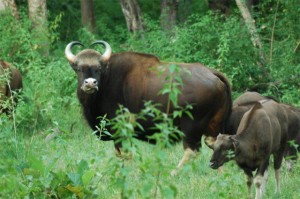
One can combine one’s Bandipur-Mudumalai-Nagrahole visit with visits to Mysore, Ooty, Shrinagapattana and Ranganathittyu Bird Sanctuary although it is advisable to limit the visit to one or two National Park particularly when one needs to drive maximum benefit from ones to drive maximum benefit from ones visit. Bandipur is best to visit during monsoons as visibility of wildlife is high. Between October-January; weather is very good as it is sunny and cool. Bandipur is not very good for summer visits due to dryness all around. It is better to make advance arrangements regarding board as this park has limited availability of accommodation.
Unlike Nagarahole the traffic restrictions are well in time. The wildlife department of Karnataka provides Jeeps to tourists to see wildlife and trips are organized in early morning hours and evening escorted by park guards and experienced drivers. The park is normally open between 6-9 am & 4-6 pm Number of buses a bay (5.30 am-5.30 pm) from Mysore to Udhagamandalam (Ooty) and reach Bandipur every 2-3 hr.
Excursions: Mudumalai wildlife Sanctuary (19 km), Mysore (80 km), Udhagamandalam (Ootacamund) (79km), Gopalaswamy Hills (20 km).

